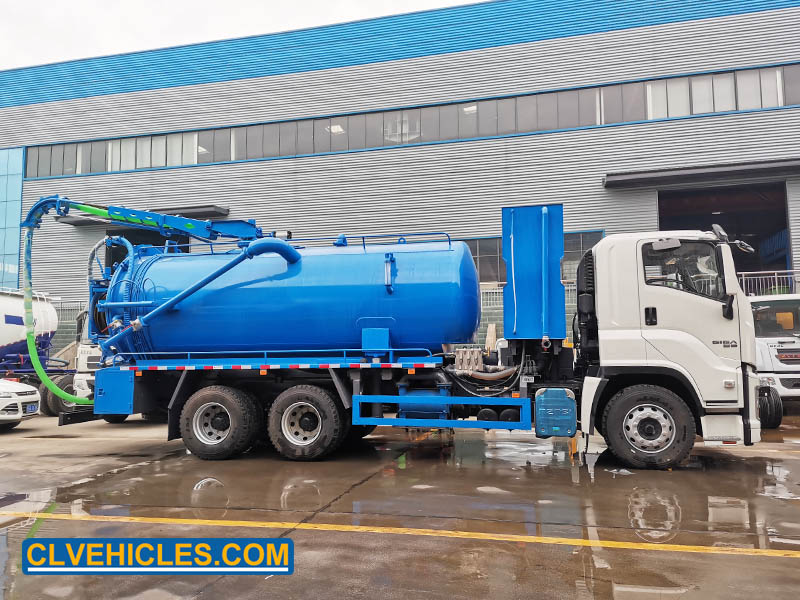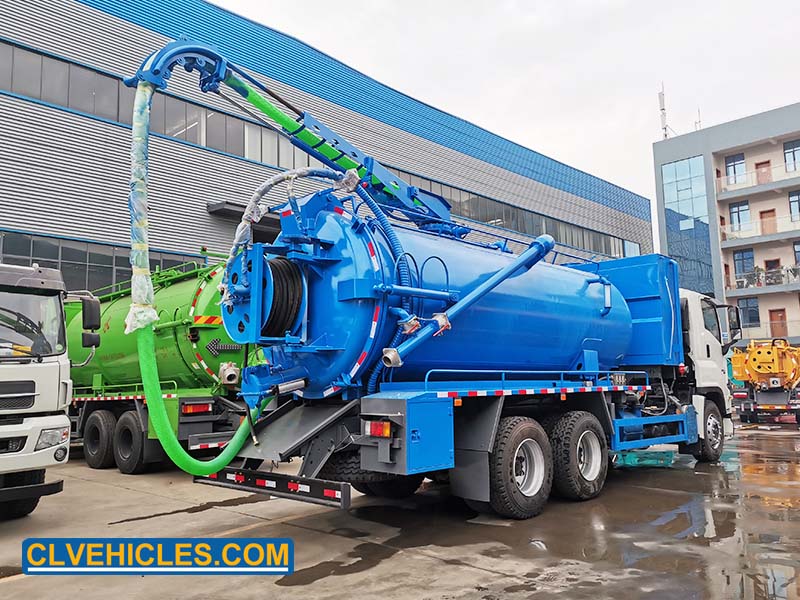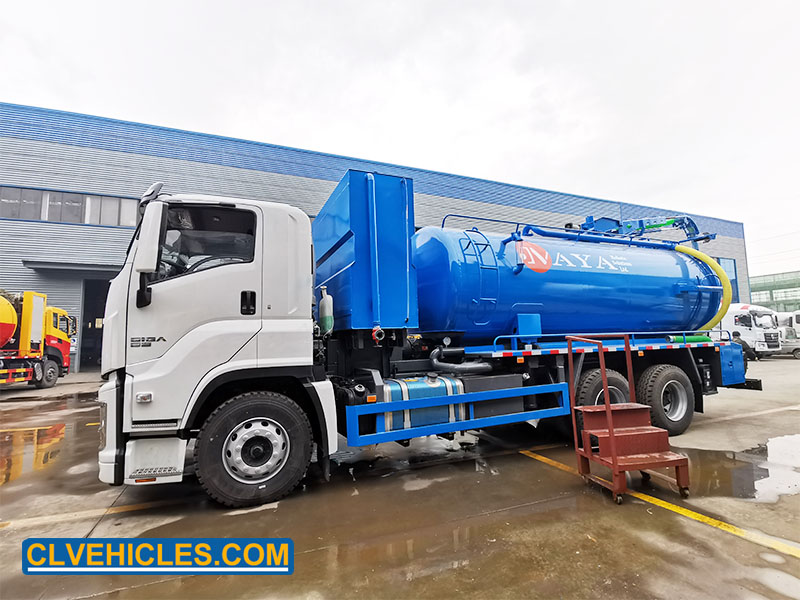The vacuum suction truck
uses a vacuum pump to evacuate the tank and then uses atmospheric
pressure to press sewage into the tank. Normally the vacuum suction
truck will be equipped with an anti-overflow valve. The anti-overflow
valve can prevent the tank from being pumped to a certain extent. But
because the principle of the anti-overflow valve is to connect the air
inside and outside the tank after being floated by the sewage, so that
the air pressure can be balanced, and the vacuum environment can be
destroyed to prevent the full suction effect. There is no sound in
actual use. If you do other things and don’t pay attention when
suctioning sewage, it will lead to flooding. Because after the
anti-overflow valve of the sewage suction truck is opened, it will take
time for the air pressure inside and outside the tank to balance, about a
few seconds. It may have filled the tank in a few seconds. And if it is
working at high power, the air flowing into the tank from the
anti-overflow valve cannot make up for the suction of the vacuum pump,
resulting in continuous suction into the tank, and the sewage will enter
the circulation to reach the water vapor separator, oil and gas
separator and vacuum pump. Especially there are many impurities in the
sewage. After entering the vacuum pump, the vacuum pump is still
rotating at a high speed at this time, and the impurities will rub
against the scraper of the vacuum pump and the inner wall of the pump,
which will cause the scraper and inner wall of the vacuum pump to wear,
and cannot form an efficient seal. The suction effect is reduced, or
even can not be pumped.

When the tank overflows, the power take-off should be closed first, and
then the sewage in the tank should be discharged. Then clean the entire
loop. Including the water vapor separator, oil and gas separator, there
is a drain valve below, open it to discharge the sewage, then clean it
with clean water, then drain it and clean it with engine oil.

The cleaning of the vacuum pump is troublesome. If the impurity does
not enter the pump body, you can open the drain screw under the pump
body, add oil into the oil barrel, and turn the vacuum pump by hand to
make the oil clean the impurities in the pump and flow out from the
drain screw. If impurities have entered, it is necessary to disassemble
the vacuum pump and clean it with water and oil. After cleaning, you
should check whether there are scratches on the scraper and the inner
wall of the pump, and whether there is any gap after the scraper is
installed. If it is indicated that the scraper and the pump body have
been worn out and are not suitable for continued use, the scraper or
vacuum pump must be replaced as needed.

At present, the new sewage suction trucks of CLVEHICLES
manufacturers have been equipped with double insurance of anti-overflow
valve and buzzer alarm according to user requirements. When the liquid
level reaches a certain height, the buzzer alarm starts to howl. At this
time, the vacuum pump can be turned off, which greatly reduces the
possibility of filling the tank.
The main cause of hydraulic oil emulsification on concrete mixer truck s is water in the hydraulic system, which is mixed with water after a long time. The removed hydraulic oil will form an emulsification of the hydraulic oil. We found that water enters the hydraulic system due to the following reasons: a. Working in a humid environment, the moisture in the air condenses due to the alternation of cold and heat, turning into water droplets and falling into the oil; b. The rainwater on the fuel tank seeps into the fuel tank due to the weak sealing of welding and connection parts; c. Due to the damage of the pumping cylinder seal and the damage of the mixing motor, moisture is brought into the oil; d. Daily maintenance, cleaning, oil change, and maintenance process bring in moisture. To prevent the oil from emulsifying, we must first prevent moisture from entering the hydraulic system. When the car leaves the factory, the welding and connection parts must be manufactured in accord...
评论
发表评论